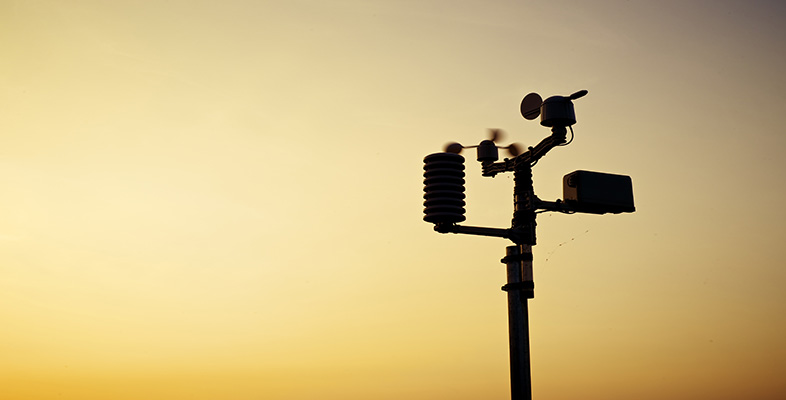2.5 Where to see satellite images
Satellite images are a common part of TV and internet weather forecasts, especially the time sequences of hourly satellite images issued by national weather agencies. They provide a unique synopsis of the situation within the last few hours and in combination with other weather data they provide the starting point for the forecast. Rapid dissemination of this 'current/latest' information is vital, so that meteorologists can make a swift visual assessment of the next few hours covering a wide region.
The data from satellites are transmitted by radio signals to various ground stations from where they are fed to the WMO for sharing around the globe. Archives of images extending back several years can be accessed via the internet.
Activity 2 Meteorological instruments (part 2)
Now study the images in the 'Satellites' sub-section in the image bank [Tip: hold Ctrl and click a link to open it in a new tab. (Hide tip)] to see how sequences of images from geostationary satellites show the development, movement and decay of various weather systems. Make notes of any aspects of the satellite images that might be relevant to the entries you will make in Table 1.
Question 3
Revisit Table 1 and put a few words in the second row to describe some advantages and disadvantages of satellites for meteorological observations. You will be able to check the answer when you have completed the whole table.
Question 4
Explain briefly why:
- a. polar orbiting satellites are not as convenient as those in geostationary orbit for providing sequences of weather images at frequent intervals;
- b.the highest latitudes are poorly served by geostationary satellites (for instance, look at what Figures 9, 11 and 12 can tell you about weather in Antarctica).
Answer
- a.A polar orbiter takes around a day to map the full globe, whereas a geostationary satellite sends back images of the same fixed view centred on a specific longitude every hour.
- b.The geostationary view is severely foreshortened in the polar latitudes - so much so that Antarctica cannot be seen with any detail.
